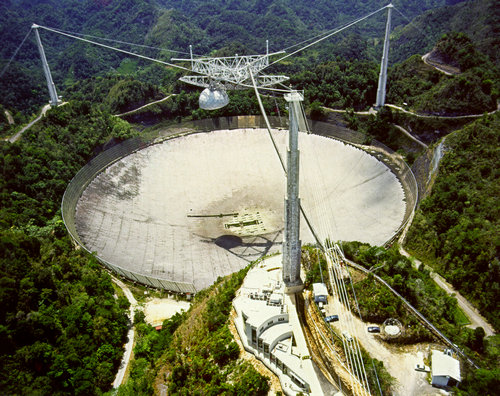
(Image of Arecibo at http://www.naic.edu)
“She is gone.”
Jonathan Friedman, a long time Arecibo staff, wrote on his social media page in the morning of December 1st (Puerto Rico time). For radio astronomers who have spent substantial part of their careers, often the best part, not many more words could have been uttered. Now two weeks have passed, I am still getting a steady stream of emails from my colleagues about Arecibo’s demise, future, and mostly just sharing the shock felt. Apparently, we are all still at the first stage of grief.
Arecibo telescope started from a presentation by Dr. William Gordon of Cornell University at the URSI meeting in 1958. The project was funded the same year and finished in November of 1963. It occupied the apex of collecting area of any radio antenna in the world, until the first light of the Five-hundred-meter Aperture Spherical radio Telescope (FAST) on September 19, 2016, for an astonishing 53 years. Rarely, if not ever in the modern era, could a scientific instrument stay avant-garde for more than half a century. The audacious vision of Dr. Gordon and continuous innovation of the staff and users of the observatory make those years all glorious: the first measurements of Mercury’s spin, the discover of the first double neutron star (Nobel prize in 1993) and the first millisecond pulsar, the largest sample by far of gaseous galaxies, the first repeating fast radio bursts, and many more.
I started my graduate years in the middle of 1990s in Cornell University, particularly, the National Astronomy and Ionosphere Center, which operated Arecibo. Although most of my time spent at the observatory involved struggling with data reduction, the science-engineering wonder that is Arecibo telescope never failed leaving me in awe. I owe to her my early career and later on an opportunity to work on FAST. As one of many hard-core radio astronomers, I present this meager tribute as well as a sincere promise
“We will carry on.”
(Written by Di LI at NAOC)

Address: 20A Datun Road, Chaoyang District, Beijing, China code: 100012
Tel: 010-64888708 E-mail: naoc@nao.cas.cn

